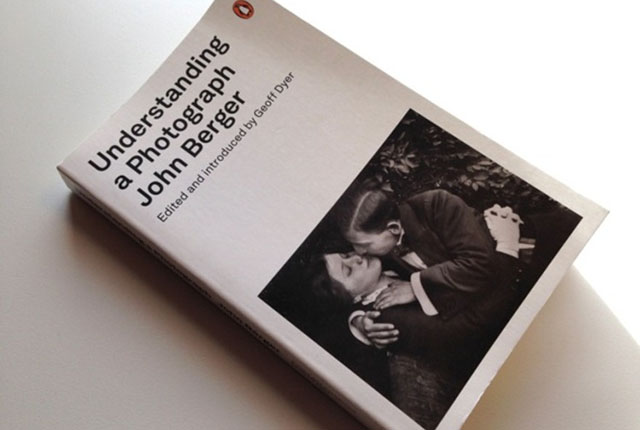A show of multi-artistic talent

 John Peter Berger (5 November 1926 — 2 January 2017) was an English art critic, novelist, painter and poet. One of his novels won the 1972 Booker Prize, and his essay on art criticism Ways of Seeing, written as an accompaniment to a BBC series, is often used as a university text. He lived in France for more than half a century.
John Peter Berger (5 November 1926 — 2 January 2017) was an English art critic, novelist, painter and poet. One of his novels won the 1972 Booker Prize, and his essay on art criticism Ways of Seeing, written as an accompaniment to a BBC series, is often used as a university text. He lived in France for more than half a century.
In 1958, Berger published his first novel, A Painter of Our Time, which tells the story of the disappearance of Janos Lavin, a fictional exiled Hungarian painter, and his diary’s discovery by an art critic friend called John. The work was withdrawn by the publisher, under pressure from the Congress for Cultural Freedom, a month after its publication. His next novels were The Foot of Clive and Corker’s Freedom; both presented an urban English life of alienation and melancholy. Berger moved to Quincy in the Haute-Savoie, France in 1962 due to his distaste for life in Britain.
In 1972, the BBC broadcast his television series Ways of Seeing and published its companion text, an introduction to the study of images. The work was in part derived from Walter Benjamin’s essay “The Work of Art in the Age of Mechanical Reproduction”.
In 1958, Berger published his first novel, A Painter of Our Time, which tells the story of the disappearance of Janos Lavin, a fictional exiled Hungarian painter, and his diary’s discovery by an art critic friend called John.
The work was withdrawn by the publisher, under pressure from the Congress for Cultural Freedom, a month after its publication.
His next novels were The Foot of Clive and Corker’s Freedom; both presented an urban English life of alienation and melancholy. Berger moved to Quincy in the Haute-Savoie, France in 1962 due to his distaste for life in Britain.
Berger’s sociological writings include A Fortunate Man: The Story of a Country Doctor and A Seventh Man: Migrant Workers in Europe (1975).
Berger and photographer Jean Mohr, his frequent collaborator, sought to document and to understand intimately the experiences of their peasant subjects.
Their subsequent book Another Way of Telling discusses and illustrates their documentary technique and treats the theory of photography both through Berger’s essays and Mohr’s photographs.
His studies of single artists include most prominently The Success and Failure of Picasso (1965), a survey of that modernist’s career, and Art and Revolution: Ernst Neizvestny, Endurance, and the Role of the Artist in the USSR (1969).
In the 1970s, Berger collaborated with the Swiss director Alain Tanner on three films; he wrote or co-wrote La Salamandre (1971), The Middle of the World (1974) and Jonah who will be 25 in the year 2000 (1976).[23] His major fictional work of the 1980s, the trilogy Into Their Labours (made up of the novels Pig Earth, Once in Europa, and Lilac and Flag) treats the European peasant experience from its farming roots into contemporary economic and political displacement and urban poverty.
In 1974, Berger co-founded the Writers and Readers Publishing Cooperative Ltd in London with Arnold Wesker, Lisa Appignanesi, Richard Appignanesi, Chris Searle, Glenn Thompson and others. The cooperative was active until the early-1980s.
In later essays Berger wrote about photography, art, politics, and memory; he published in The Shape of a Pocket a correspondence with Subcomandante Marcos, and penned short stories which appeared in The Threepenny Review and The New Yorker. His sole volume of poetry was Pages of the Wound, though other volumes such as the theoretical essay And Our Faces, My Heart, Brief as Photos contain poetry as well as prose. His later novels include To the Wedding, a love story dealing with the AIDS crisis, and King: A Street Story, a novel on homeless and shantytown life told from the perspective of a street dog.[4][29] Initially, Berger insisted that his name be kept off the cover and title page of King, wanting the novel to be received on its own merits.
Berger’s 1980 volume About Looking, includes an influential chapter, “Why Look at Animals?” It is cited by numerous scholars in the interdisciplinary field of animal studies.
The chapter was later reproduced in a Penguin Great Ideas selection of essays of the same name.
Berger’s novel From A to X was longlisted for the 2008 Booker Prize; Bento’s Sketchbook (2011), has been described as “a characteristically sui generis work, combining an engagement with the thought of the 17th-century lens grinder, draughtsman and philosopher Baruch Spinoza with a study of drawing and a series of semi-autobiographical sketches”. — Wikipedia.







Comments